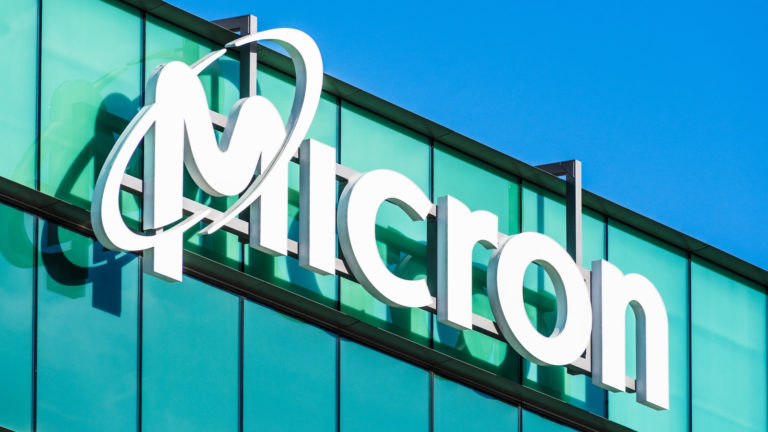Micron Technology (NASDAQ:MU) stock fell hard into its June 30 earnings release, with investors betting on lower profits and guidance.
The stock opened June 30 at about $56 per share, a market cap of $62.5 billion, but a price-to-earnings multiple of just 7x. Shares started the year at about $96.
Despite its value price, analyst estimates remain bullish. The company was expected to earn $2.46 per share on revenue of $8.7 billion. There was even a “whisper number,” a hoped-for estimate of $2.50 per share. The company’s 29 analysts were expecting an earnings downturn until 2023, with $7.56 per share of earnings. That would still give Micron a forward P/E of 7.4x.
Micron wound up earning $2.6 billion, $2.34 per share, on revenue of $8.64 billion.
The numbers were short of analyst estimates. The initial reaction was a drop to $52, but it finished the week up at $59 per share.
| Ticker | Company | Recent Price |
| MU | Micron Technology | $58.85 |
Cheap as Chips
Memory chips have the most volatile prices in the semiconductor market.
This has led to extreme boom-and-bust cycles. Micron peaked at $100 in early 2000, then thudded all the way below $5 by the end of the decade. Shares traded below $10 as recently as 2016, on fears of competition from Korea and China.
But CEO Sanjay Mehrotra, recruited after he sold his Sandisk to Western Digital (NYSE:WD), predicted in March that Micron sales could more than double this decade. Its market could grow to $330 billion. Sales in 2021 were $27.7 billion.
If Mehrotra is right, and I believe he is, Micron looks like a great bargain in today’s market. The risk is that much of Micron’s short-term outlook is based on cloud data centers, where buyers drive hard bargains.
Boom and Bust
Micron is based in Boise, Idaho because the late J.R.R. Simplot, who made his money in potatoes, was an early investor in the 1970s. It still has two U.S. plants, but most of its production now comes from East Asia.
Changing that could take as much as $150 billion, and Micron’s 2021 capital budget was just $10 billion. Micron, which had $8.6 billion in cash at the end of 2021, is a backer of industry subsidies now before Congress. It is offering to expand its Boise plant if the act is passed. The Act has bipartisan support but hasn’t passed, partly because the federal budget is in the way, partly due to arguments over funding unrelated research.
If it is passed, the new capacity will still take years to build out. Micron could then be adding supply to a global glut and it’s pricing, not how many chips Micron makes, that determine its profit.
Those fears would be unfounded if new client demand in the machine internet or the consumer metaverse ramped up. I expect the former to happen, especially in medical devices. But it’s tough to bet on new consumer markets before they establish a “killer app” that can drive demand.
The Bottom Line
Micron is a rare creature — it’s a value stock in a growth industry.
It’s not priced like a value stock because the dividend is nominal, only 10 cents per share each quarter. Instead, Micron supports the stock price with buybacks, whose size varies widely. This leads to volatility in the stock price, even when results don’t merit it.
Stabilizing the stock price would mean raising the company’s dividend, which now costs Micron just $448 million per year. Intel (NASDAQ:INTC), whose dividend yields 3.86%, has proven less volatile this year even as growth has reversed. Dividends are what investors want right now. Micron doubling the dividend would raise its cost to $900 million per year but would show confidence in the future and could attract capital.
Without a dividend hike, Micron stock will remain volatile.
On the date of publication, Dana Blankenhorn held long positions in INTC. The opinions expressed in this article are those of the writer, subject to the InvestorPlace.com Publishing Guidelines.
Dana Blankenhorn has been a financial and technology journalist since 1978. He is the author of Technology’s Big Bang: Yesterday, Today and Tomorrow with Moore’s Law, available at the Amazon Kindle store. Write him at danablankenhorn@gmail.com, tweet him at @danablankenhorn, or subscribe to his Substack.

